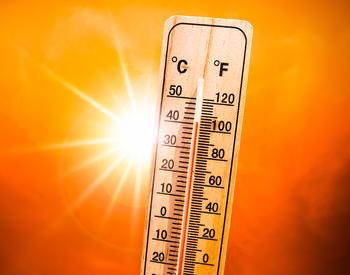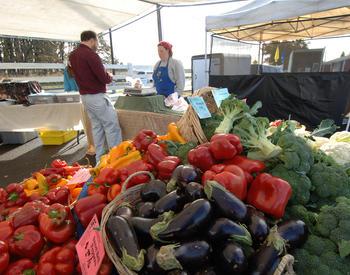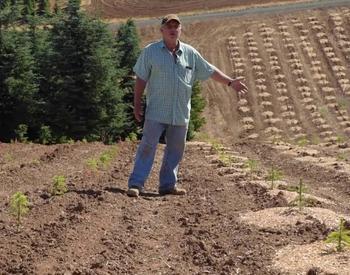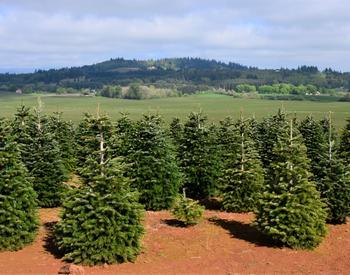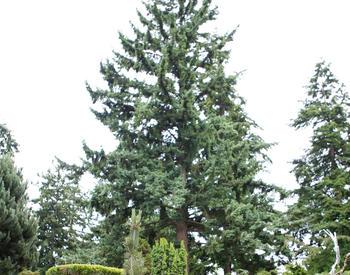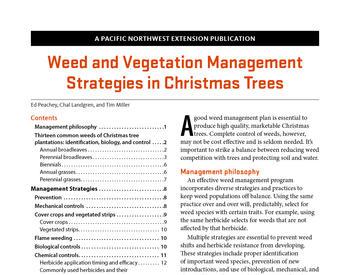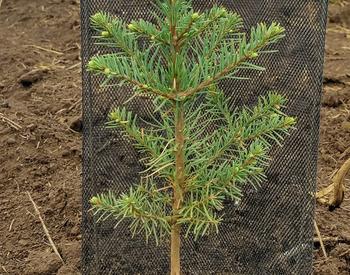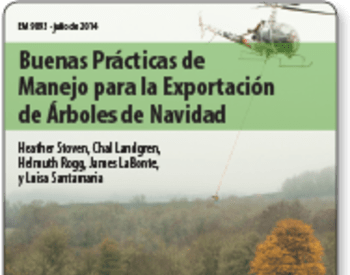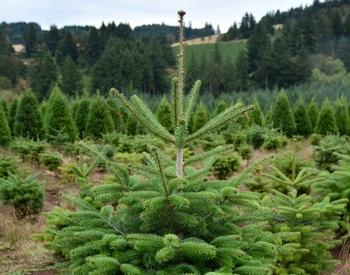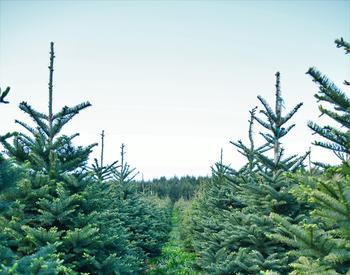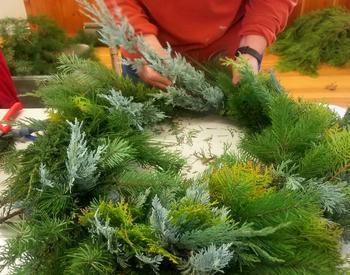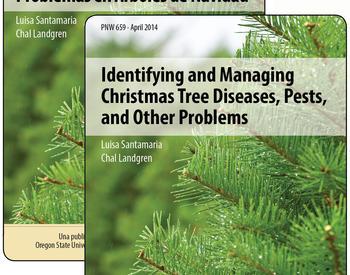The extreme heat dome event that hit the Pacific Northwest in late June of 2021 was a devastating blow to almost every sector of agriculture in the region. Over the course of three to four days, temperatures soared to record-breaking highs that many never imagined possible in the area. The triple-digit highs stretched across the Pacific Northwest, and the temperature in the mid-Willamette Valley officially reached 118°F in Salem.
Many high-value crops were damaged, and Christmas trees were not spared. The timing also amplified the damage to many typical Christmas tree species. Later bud-breaking varieties, such as noble fir and some Nordmann and Turkish fir, had tender new foliage and expanding leaders that showed significant injury (figures 1 and 2).
Spring-planted seedlings also were quite vulnerable and suffered high mortality. With much of the region in either moderate or severe drought, the resulting low soil moisture also contributed to this “perfect storm.”
Christmas tree specialist Chal Landgren visited many growers in the days and weeks following the heat event, and he also saw firsthand on his own farm the extent of the damage. Most tree species suffered damage including a mix of:
- Distorted leaders (some with dead terminal buds and burnt/red needles).
- Wilted new growth tips.
- Death of the entire tree, in some cases.
Many sites had harvest-sized trees heavily damaged as well as seedlings. Douglas-firs came through this event with very minimal damage, most with none at all.
General observations noted at many growers’ fields throughout Oregon and Washington
-
Christmas trees growing in lower-elevation fields suffered the most severe damage.
-
The south sides of trees are more severely damaged (figure 3).
-
2021 planted seedling mortality: especially noble fir with mortality rates estimated at 70% by early September, with other species seedlings showing better survival, but still higher percentages than seen in recent years.
-
Ranking of species by most damage:
-
Fraser fir: lots of damage, including leaders and needles.
-
Grand fir: a range of damage, including leaders and needles.
-
Noble fir: wide range of damage, including leaders, needles, and current season and last year’s growth.
-
Nordmann and Turkish fir: damage to leaders and upper whorls mainly. Late bud-breaking trees showed more damage with red or burnt needles on some (figure 4).
-
Douglas-fir: very little to no damage overall.
-
So, what actually happened within the trees during the extreme heat?
Here is how Dr. Bert Cregg, tree physiologist and professor at Michigan State University, explains what was happening within the trees during the extreme heat:
“The extreme high temps and low RHs result in very high vapor pressure deficits. Typical summer midday conditions in the PNW would be 90°F, 35% RH, vapor pressure deficit around 3kPa. At 118°F, the RH would be about 15% resulting in VPDs around 9kPa. That’s a whole lotta sucking force trying to pull water out of those needles. With limited soil moisture, the stomata close, which saves water but eliminates transpirational cooling, so now tissue temperatures begin to increase to the point there is direct damage, especially to the succulent new shoots, which likely hadn’t hardened off yet. I suspect if you had the same temps at the end of July you would still see the needle browning (needle desiccation due to high VPD + limited soil moisture) but less of the direct heat injury to shoots.”
The total impact of this unprecedented heat event will likely not be known for years. The immediate outlook is that many growers may have fewer harvestable trees, especially noble firs, which may impact supply and costs.
